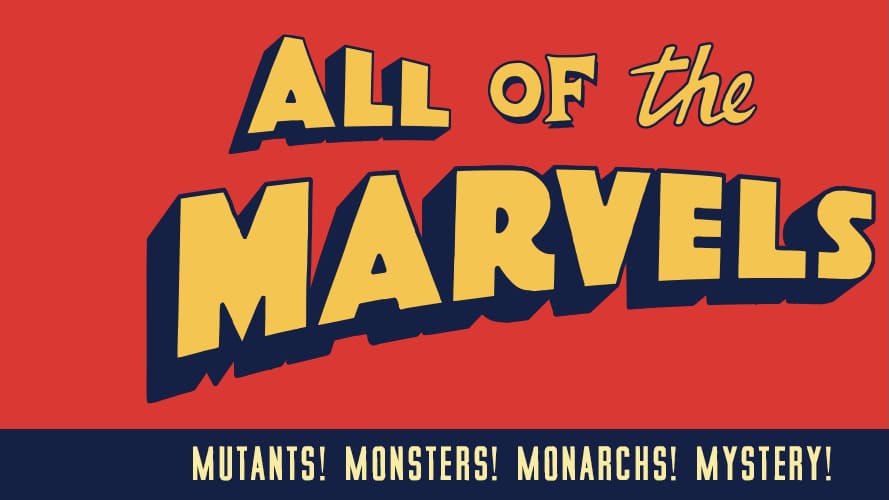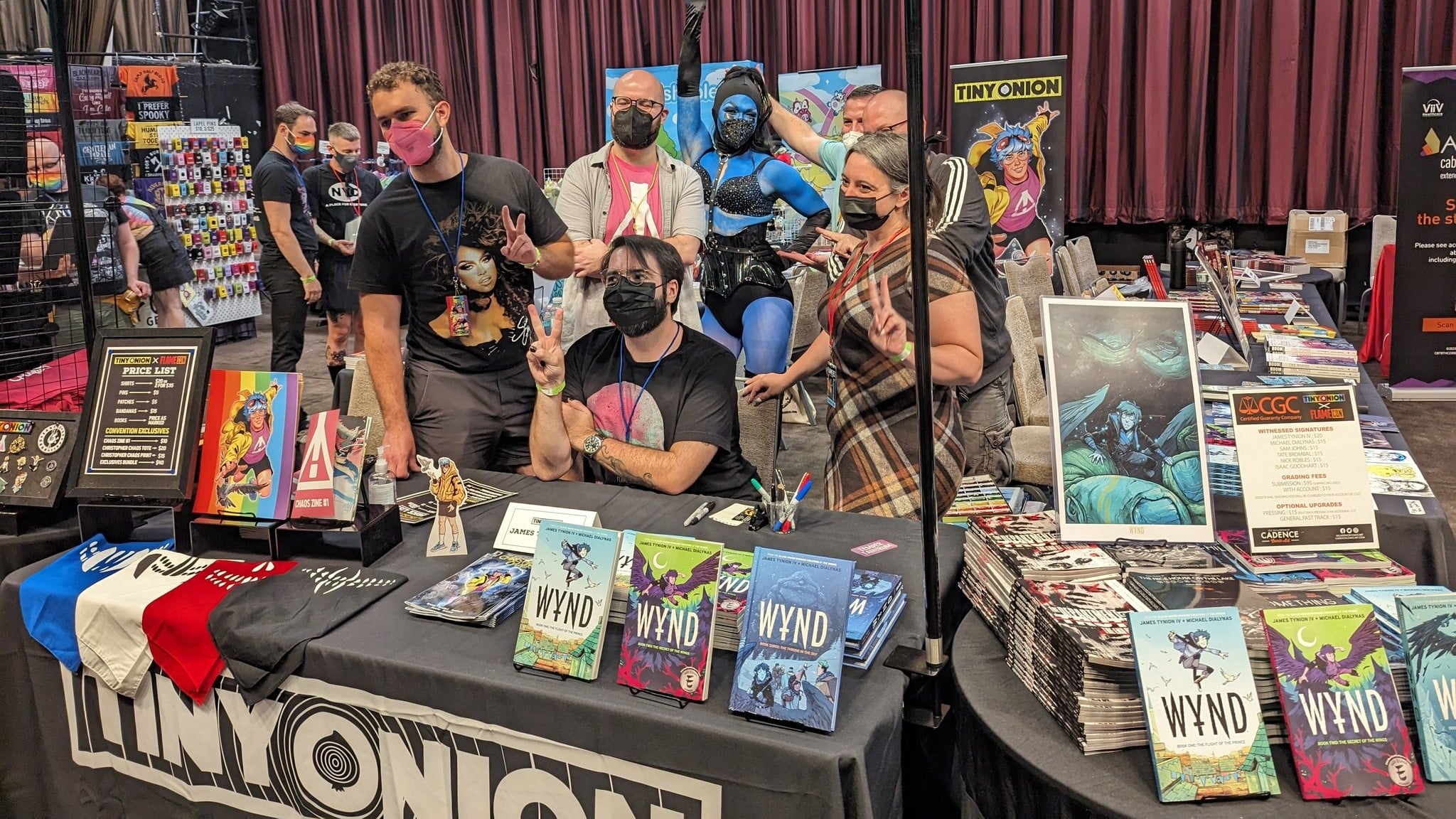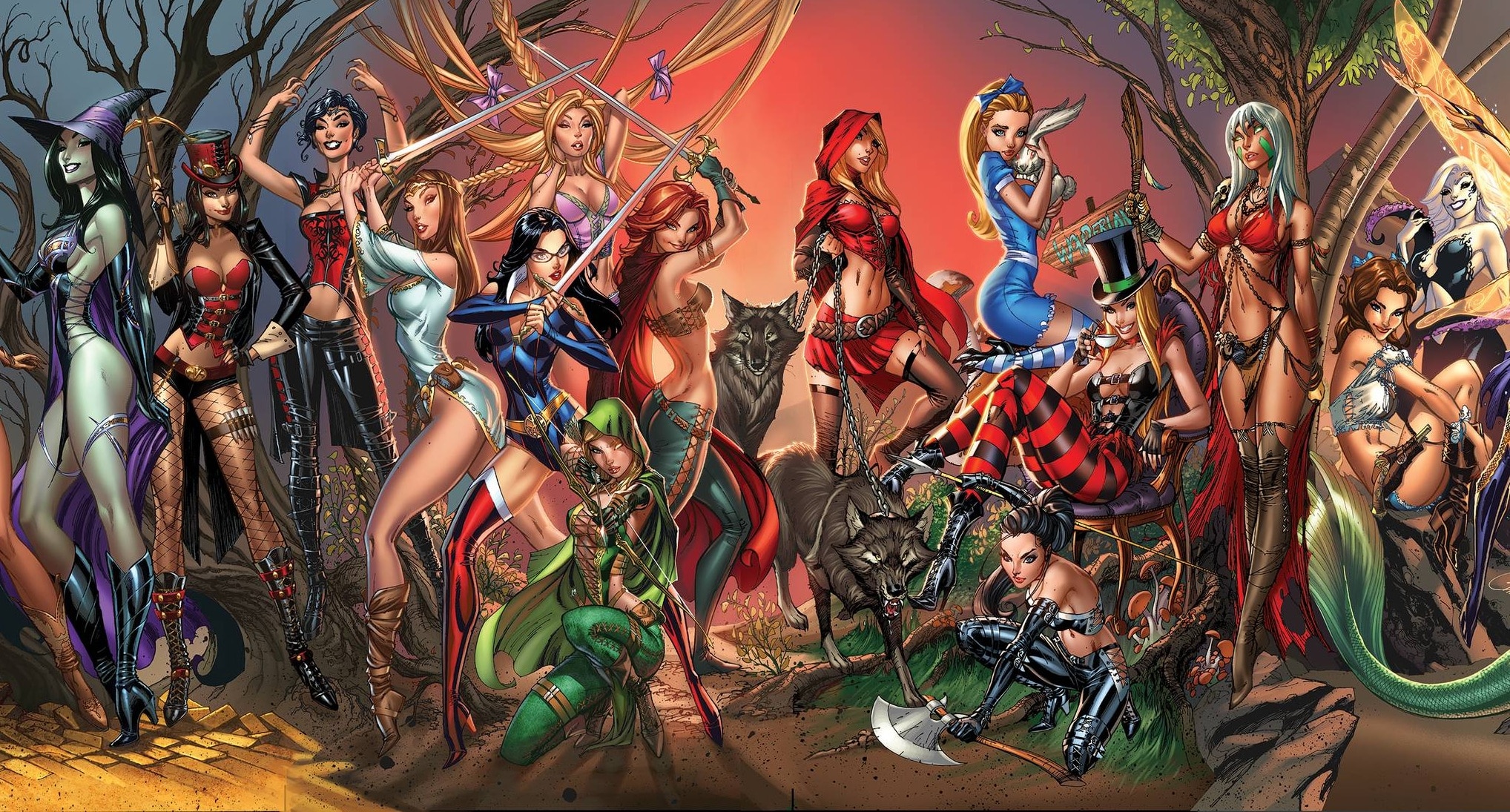Douglas Wolk has been reading Marvel comics since before Kate Pryde met the X-Men, but he began his adult life as a pop music critic, editor of a music magazine, and author of a very good book on James Brown. After relocating from the nation’s comics capital, New York City, to the nation’s other comics capital, Portland, Ore., he wrote the aptly title Reading Comics (2007), then co-created a mini-series in the universe of Judge Dredd before deciding to read every Marvel comic ever published (except Star Wars comics, some Westerns and war comics, and work from before 1961, because you have to stop somewhere).
The magnificent results go on sale this week in Wolk’s third full-length book, All of the Marvels. ComicsXF regular and KSS Marauder maintenance worker Stephanie Burt had questions for Douglas, and Douglas had answers. He is not, nor has he ever been, confused with Uatu the Watcher.
“Very Deep Into the Weeds”

Stephanie Burt: How did you go about writing this book? How did you get from the first outline to the final published draft?
Douglas Wolk: It was an unexpectedly long and difficult process, years longer than I thought it was going to be. The initial finished draft was kind of a disaster: it went very deep into the weeds right away and never came out again. I think I threw out 85 or 90% of the original version, and subsequently wrote or half-wrote a bunch of other sections that didn’t end up in the final book either.
Stephanie: Who is the most important under-rated character in the Marvel Universe, and why is it Linda Carter, Night Nurse?
Douglas: Ha! I have an ongoing obsession with Linda Carter, who first appeared as the star of Linda Carter, Student Nurse, a couple of months before Fantastic Four #1 in 1961 (and gets a little chapter devoted to her in the book), but I prefer thinking of her as Linda Carter, the night nurse, lower-case: it’s not her alter ego, it’s just a thing she does. I love the idea that an ordinary, non-powered person has been part of the Marvel story since it began — sometimes where the audience can see her, mostly not — and has endured and prospered just by doing what good she can.
“Most important,” though: that’s tough, because there are lots of minor characters I like a lot. Diamondback (Rachel Leighton) is an absolutely fantastic ensemble player — initially just part of the Serpent Society who were the “Greek chorus” in Mark Gruenwald’s Captain America, she was interesting enough that she ended up taking a more prominent role in that series. Skreet, from Keith Giffen’s Lunatik stories, is weird and delightful. The current Power Man (the one who’s not Luke Cage), Victor Álvarez, has a wonderfully clever premise. In any case, sometimes minor characters get bigger: it took 25 years for anyone to figure out that Squirrel Girl was actually amazing.
Stephanie: Most of your book necessarily looks at characters and plot. But comics are (wait for it) a visual medium. What pencillers and inkers blew you away but aren’t especially heralded today?
Douglas: I think my biggest revelation was realizing just how good Sal Buscema is. He drew 54 issues with 1976 cover dates alone. I’d always thought of him as “the guy who could hit the deadlines, no matter what.” But I saw that when he’s paired with inkers who are willing to add their own personalities to his work — Ian Akin and Brian Garvey, or Kyle Baker, or Bill Sienkiewicz — it really comes to life. I was also happy to discover Jorge Lucas, who’s sometimes called on to be a stylistic chameleon (he can do convincing Kirby and Moebius impressions), but has a lovely ligne claire-ish style of his own on projects like the Wolverine: Xisle series.
“They’re All Doombots”

Stephanie: You’ve got some terrific synthetic takes on the whole Marvel comics universe that didn’t make into the finished book. Can you share one or two?
Douglas: As someone who does a weekly Doctor Doom-themed podcast, there’s a heretical theory that I kind of love (and that can’t be true, for various reasons, some canonical): they’re all Doombots. There is no “actual” Doctor Doom behind one of those masks, scarred or unscarred. It’s all just Reed Richards, playing chess against himself.
Stephanie: What’s the biggest difference between writing about lots of comics at once and writing about one comic or one series at a time?
Douglas: It’s the difference between architecture and city planning: the mechanics of a particular work look very different from what a bunch of works (by disparate groups of people, with disparate goals and tools) look like collectively. One is more or less deliberate, the other is more or less accidental. I also tried to work around that, by structuring the book’s long chapters around strings of individual issues, one at a time–not the highlights, exactly, but the points that can get lines drawn between them to kind of outline the shape of the thing.
Stephanie: So a kind of rocky, orange shape. Prone to clobberin’ but otherwise friendly. Large and hard to shop for.
Douglas: Exactly.
Stephanie: Cosmic Marvel, Street-level Marvel, Avengers-office Marvel, Spider-Marvel, Mystic Magic Marvel, Mutant Marvel: do you have a favorite and why? (What did I miss?)
Douglas: There’s also Horror Marvel (Tomb of Dracula, Ghost Rider, usually the Hulk), and occasionally Normal-People Marvel (from the aforementioned nurse comics to 15 Love and Steeltown Rockers — the first Marvel title to reach its 200th issue was Millie the Model). But my favorite might be Weird-Ass Marvel. Howard the Duck. The Defenders, especially in the (very different) eras written by Steve Gerber and by Peter B. Gillis. She-Hulk in the Charles Soule/Javier Pulido series. Various incarnations of Moon Knight. Jim Steranko’s Nick Fury stories. The Chelsea Cain/Kate Niemczyk Mockingbird.
Stephanie: Chris Claremont. Discuss.
Douglas: Claremont’s tricky to assess, partly because his highs are so high and partly because perceptions of him — including mine — are so tied up with his ’75-’92 X-Men and related titles. (Claremont was initially going to be part of the Image Comics crew, and I sometimes wonder what might have happened if he’d shifted his focus in the ’90s to small, self-contained projects that he co-owned.) [Ed. Note: Douglas is referring to Claremont’s aborted Huntsman project, to be published through Image with Wilce Portacio as artist, though Claremont was not envisioned as a founding partner in the company.]
I think one aspect of Claremont’s work that’s underrecognized is just how good a collaborator he was for a very long time; almost all of his best comics are collaborations with artists with whom he had long partnerships. After his first X-Men run ends, though, he has fewer of those tight, ongoing collaborations with close associates who are in a position to push back, or nudge him back on track when he wanders.
“A Commercial Enterprise First”

Stephanie: How did the changes in Marvel’s business model (some of them chronicled in Sean Howe’s book Marvel Comics: The Untold Story affect what happened in-universe? Did those changes ever help writers tell stories?
Douglas: Mainstream comics have always been a commercial enterprise first — they live and die by how well they sell, and they sell if they speak to their intended audience (so loudly that that audience shells out money for them). Everything that happens in-universe happens for business reasons, even if those reasons are “this creator gets to do pretty much whatever they feel like doing, because their stuff always sells.”
And business changes are very often tools for creators, too. “We now collect every five- or six-issue stretch of a series as a book” means that characters no longer have to spend the first quarter of each issue explaining the plot. “We relaunch with a new #1 when a new creative team comes on” means that creative consistency is enough of a priority that writers and artists will be paid well enough to stick around. “There’s going to be a ‘blank’ movie so we need a whole lot of comics about that character/group” means that some of them are going to be able to go in directions they otherwise couldn’t: if there are eight Avengers titles running, the odds are much higher that one of them is going to be Gillen & McKelvie’s Young Avengers than if there’s only one Avengers series. (Likewise, “the higher-ups really want some more Inhumans product” is probably the only way we get Saladin Ahmed and Christian Ward’s Black Bolt.)
Stephanie: You get to write a mini-series for one Marvel team or character. Who?
Douglas: First impulse: Moonstone, the Karla Sofen version. I don’t think she’d be a good candidate for an ongoing solo series, because the only Moonstone stories there are to tell are variations on “Moonstone manipulates and backstabs everyone,” but I bet there could be a really solid five-parter that would let her show off her elegant backstabbing technique.
Stephanie: I know that you finished, and then cut from the finished book, at least one chapter about a high-profile character…
Douglas: Man, that Gargoyle chapter gave me so much trouble…
More seriously: you’re talking about the Punisher chapter that I ended up cutting. The problem, for me, with writing about the Punisher is that I strongly dislike him, and I generally don’t enjoy reading about him. You’d think, given my enormous affection for comics about Judge Dredd — another hyperviolent moralist — I’d have a greater tolerance for comics about Frank Castle. But Dredd explicitly makes the point, over and over, that its protagonist is the willing tool (the embodiment, in fact) of a catastrophically terrible fascist system. The Punisher almost always invites us to see its protagonist as heroic, and his victims as subhuman. To identify with Frank Castle in the same way that, say, some X-Men fans identify with their favorite characters is to be someone I’d cross the street to avoid.
So I locked myself into an apartment in New York with provisions to last me a while, and didn’t let myself out again until I’d read all of the Punisher’s comics and written about them. And I’m pretty pleased with the piece that came out of that (about the nonexistent problems that Punisher stories invent and pretend are real-world problems), but it really didn’t belong in the final version of the book — it’ll probably end up being a little standalone pamphlet, one of several I’m putting together to repurpose sections I liked a lot that didn’t fit into what I wanted the book to be.
Stephanie: New York City in Marvel comics. Discuss.
Douglas: There’s a persistent myth that Stan Lee described the Marvel universe as “the world outside your window.” It’s fairer to say that Marvel’s New York is the city outside its artists’ windows: a real place populated by fictional characters, a geographical array that’s convincing because it’s drawn from a perspective of familiarity even when it’s impressionistically exaggerated. I particularly like the scenes that take place in high-traffic parts of the real New York — Ghost Rider gunning his motorbike up the stairs at Grand Central Station, an enchanted horde tromping along the Bowery, the innumerable panoramic shots of Times Square under various kinds of attack.
Stephanie: You worked in a local comic shop as a teen in Michigan. What did you learn as an LCS employee?
Douglas: I learned that every comic is a meaningless, cheaply mass-produced artifact, and also somebody’s magical gateway to a wonderful place. I learned that people who get into buying comics for speculative purposes are pretty much never pleased about how that works out for them, and that people who follow their taste end up surrounding themselves with things that have a lot of meaning to them. I learned that “customer service” often just means getting to know interesting people, and that shopping as a shared social ritual is one of my favorite things from both sides of the counter.
Me too! And with that, thank you to Douglas Wolk for the time and the attention! I hope people go out and shop for your book!
Stephanie Burt is Professor of English at Harvard. Her podcast about superhero role playing games is Team-Up Moves, with Fiona Hopkins; her latest book of poems is We Are Mermaids. Her nose still hurts from that thing with the gate.






